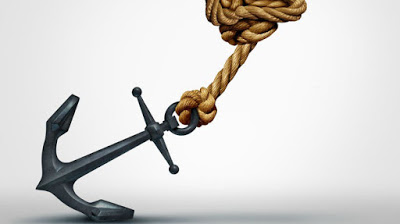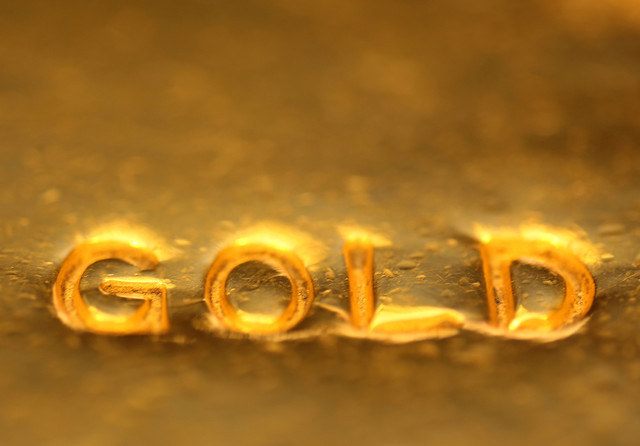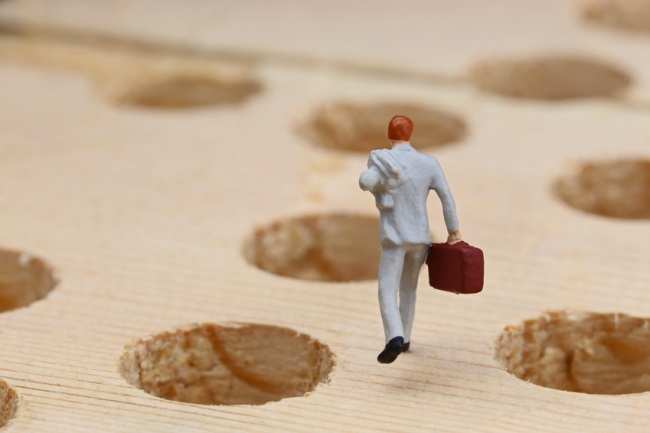by Hubert Marleau, Market Economist, Palos Management
The S&P 500 was up 1.7% to close at 3271. The stock market went through the catastrophic Q/2 GDP decline like a knife cuts butter. The Fed essentially promised that it would not raise interest rates for a very long time and would not abandon the unemployed for the sake of inflation or the dollar. They extended their swap line to foreign banks even though there was no need to do so. It clearly shows that they want a lower dollar. The pessimists were caught by surprise by the earnings season. According to Bob Pisani, 86% of companies so far have beaten estimates. By contrast, fresh data which make up high frequency economic models are showing a slowdown in growth in what has been so far a sharp v-shape recovery and not a contraction as many were purporting.
A Summary On the State and Outlook of the U.S. Economy
Last week the Bureau of Economic Analysis (BEA) released the GDP and Personal Income estimates for Q/2 2020 and the month of June. The full effect of the Covid-19 pandemic could not be completely quantified. Nevertheless, a few important observations can be made. In the six months ended June 30, 2020, N-GDP decreased 10.8%, suggesting that the economy would need to generate an extra $2338.6bn worth of business in the following quarters to bring back the N-GDP to the level registered in Q/4 2019. Suffice it to say, that the decline was fast, deep and concentrated. It should be noted that if it had not been for the government relief programs and the Fed’s monetary stance, the decrease in the level of economic activity would have been far worse and perhaps without an ensuing recovery. Thankfully, it did not occur. On the contrary, the bounce back was quick, large and widespread as “stay-at-home” orders were partially lifted in May and June. Interestingly, by June personal expenditures on durable and non-durable goods had fully recuperated while spending on services was still 55% lower than it was in February. Given the scenario that businesses will take advantage of the lower dollar and replenish their inventory loss, only the service sector needs more financial and economic assistance.The forthcoming $1.0tn plus fiscal package which is currently delayed but expected will likely help the service sector from getting any uglier than it currently is. If for any reason, we were to get a break from the virus, given the huge amount of pent-up demand that stems from huge amounts of personal savings, the employment, productivity, inflation, production and earnings would surge all at the same time.
WHAT FOLLOWS IS FOR THE TECHNICALLY INCLINED
An Analysis of The State of and Outlook for the U.S. Economy:
During the three months ended June 30, 2020, the U.S. economy suffered its worst quarterly drop in business activity since 1946. R-GDP plunged at the annual rate of 32.9%. The plummet was not as bad as feared because it was totally concentrated in April and less than the consensus expected (-35.6%). The June GDP report will very likely be a permanent indication of the pandemic’s low point in the level of economic activity. It will certainly become the reference to see how much growth and inflation will be needed to return the economy to the level registered in 4th quarter 2019. In this connection, it is important to understand what happened in the first six months of 2020 and what is the current state of the economy.
What We Had In the Last Six Months Was Obviously a Health-led Contraction:
- N-GDP totalled $19,408.8 billion registering a decrease of 10.8% from Q/4 2019— a
$2338.6bn drag.
- R-GDP totalled $17,205.8 billion registering a decrease of 9.5% from Q/4 2019.
- The Implicit price deflator decreased 1.3% for the period under review.
I’m sorry that I might bore you with a bunch of drudging numbers produced by the Bureau of Economic Analysis (BEA), but it’s necessary to unambiguously prove that the economic fallout was highly concentrated and bounced back very quickly.
On the demand side, lockdowns and social distancing brought about a significant $1,529.0bn decrease in personal services spending (mainly health care, public transportation, restaurants, hotel accomodations and recreation), creating a 65.4% drag. Expenditures on gasoline, clothing and footwear accounted for another 11.4%. A further big drag was the supply disruption which caused a $343.9bn inventory reduction accounting for 14.7%--an historical record. That essentially leaves us with 8.5% or $198.8bn for all other numerous items that compose the N-GDP.
On the supply side, the big story is that government transfer receipts which boosted personal income by $2499.4bn, more than enough to increase overall personal income for all households by $1,579.6bn. Therefore, as much as $919.8bn was lost in the form of wages, salaries, supplements and proprietors’ income. Based on household surveys, anecdotes and estimates, approximately 35% of the transfer payments ($875.0bn) was not spent. It’s not foolproof, but one could appropriately deduce that money which would have normally been spent on clothing, gasoline, health care, transportation services, recreational activities, restaurants, hotels and personal services ($2081.0bn) went into personal savings. Given that personal savings were $3090.4bn higher in Q2 2020 than in Q4 2019, there must have been a $740.0bn spending reduction somewhere else. Interestingly, imports of goods and services were $722.5bn less in Q/2 than in Q/4.
The Outlook: Not As Bad As some Say... But
As lifeless as the aforementioned statistics are, they unequivocally prove that in order to get back to where the Americans were in Q/4 2019, the aggregate level of economic activity will have to increase $2,338.6bn or 12.1%. How fast it will get there will depend mainly on what the household sector will do next with its personal disposable income and personal savings, along with the ability of businesses to replenish their inventories and take advantage of the lower dollar to increase exports or reduce imports.
Now that we are in Q/3, one should be aware that the rollover consequence of the v-shape recovery that occurred in May and June give assurance, according to IHS Markit estimates, that a growth factor of 4.5% is in the cards even if there is absolutely no growth at all in July, August and September. This assumes that businesses will continue to shed their inventories and bypass the favourable effect of the lower exchange value of the US dollar. These two items alone could easily produce an increase of $400bn of business activity to the GDP. It would translate into an extra 2.1% to the growth factor. In this connection, investors can compute that by the end of September, the economy could recuperate 55% of what it lost, without the blessing of the consumers. Investors should note that I gave no consideration to the possibility of an increase in inflation in spite of the fact that price indices have ticked up in the last three months.
While the above forecasts are comforting and reliable, households would need to step up to the plate to fill the remaining 45% gap ($1052.3bn) to reach home base. Roughly, in normal times, personal income accounts for about 85% of N-GDP, personal savings around 5.0% and personal taxes less social benefits 10%. Therein lies the difficulty because the Q/2 numbers are completely out of whack For example, personal income represented 105% of N-GDP, personal savings around 24% and personal taxes less social benefits about minus 29%. Unquestionably, making sense of these numbers is complicated because the virus dramatically changed consumer behaviour in various ways and the government lavishly handed money to unemployed workers.
Thankfully, on Friday, the BEA released its informative report on personal income and outlays for June. The amount of detail is appalling, but very revealing. In this regard, I shall stick with what I believe to be the most important and compare June to February. It will add colour and hopefully help to determine what is happening.
During the month of June, personal income totalled $19,880.3bn ($760.6bn more than in February) and of that amount $4,901.4bn was government social benefits ($1,736.0bn more than in February).
During the month of June, individuals paid $2,141.9bn in taxes compared to $2,284.7bn in February, for a decrease of only $142.8bn--a 6.25% miss.
Consequently, the household sector had $17,738.4bn in disposable income in June compared to $16,835.1bn in February, for an increase of $903.3bn.
Remember, that consumers will have to spend around $1025.0bn more than they did in June to attain the February level of $ $15,442.3bn. Take notice that personal expenditures on durable and nondurable goods were higher in June ($4723.5bn) than they were in February ($4568.2bn).
Interestingly again, personal consumption expenditures on services totalled $9,127.6 in June--1,181.6bn less than in February ($10,309.2bn) but $927.4bn more than in April ($8,200.2bn). Thus, the service sector has recovered by about 44%. The economy has the financial means to shift $1.2tn out of personal savings into services. In June, personal savings totalled $3.4tn—that is $2.0tn more than individuals would normally save. Currently the personal rate rate is 19.0%—that is 12 points higher than it usually is. However, the virus will probably prevent households from parting quickly with their comfortable safety net.
I firmly suspect that Congress and the White House will come up with a fiscal plan that may total in excess of $1.0tn to relieve the service sector (business and workers) from their miserable situation. If that $1.0tn gets spent wherever in the next six months, the aggregate level of economic activity in Q/4 would equal that of Q/4 2019. However, the composition of consumer spending habits would end up being strikingly different—away from services to durable and non-durable goods. In fact, we had a glimpse of this behaviour in May and June.
The fear of missing out is not going away. Why? If for any reason, we were to get a break from the virus, given the huge amount of pent up demand that stems from huge amounts of savings, the productivity, inflation, employment and earnings would surge all at the same time.
Copyright © Palos Management














